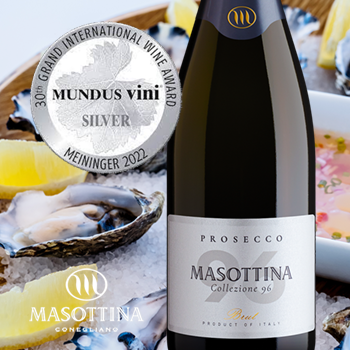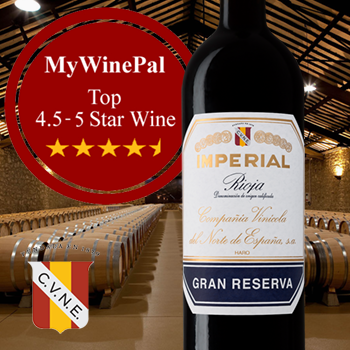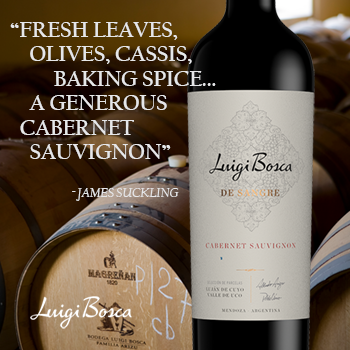In my previous article about preparing for your Summer Wine Trip in the Southern Hemisphere, I outlined most of the wine producing countries and some airline ticket prices from Canada to those countries. This is Part 2 of this article, where you will get to know a bit about the signature grapes of Chile and Argentina and a few (not an exhaustive list) of their icon or cult wines.
Chile
Signature Grapes
In my opinion, Chile’s signature grapes are Carmenere and Sauvignon Blanc. Carmenere I think is one everyone agrees with. Sauvignon Blanc I think could be debated. Some may say their Chardonnay or maybe Syrah could also be signature grapes. But for my experiences with Chilean wine, I’ll stick with Carmenere and Sauvignon Blanc.
Carmenere is a red wine grape, which has it’s heritage from Bordeaux, France. It is one of the Bordeaux varieties that did not do very well in France due to the cooler climate. Carmenere needs a good amount of sunlight and heat to ripen properly, otherwise you can get a green flavour and aroma from this grape. Luckily Chile is blessed with scads of sunlight and heat in the summer. This grape was brought from France to Chile in the 1800’s before phylloxera nearly wiped out the vitis vinifera in Europe. Carmenere was mistaken and planted together with Merlot. It was not until 1994 when Professor Jean-Michel Boursiquot from the Montpellier’s school of Oenology confirmed that an earlier-ripening vine in Chile was Carmenere, and not Merlot. Slowly Chile has been separating these two grape varieties, and now produces single varietal Carmenere for you to enjoy. Carmenere can have a wide range of flavours and aromas including cherries, smoky, spicy, earthy, dark chocolate, tobacco, and leather.
Sauvignon Blanc is a cooler climate grape, while Chile is thought of as a warmer climate country. This is true to a point. If you plant your grape vines closer to the Pacific Ocean in Chile, or higher up in elevation, you take advantage of cooler climatic conditions. Chile’s Casablanca Valley and nearby San Antonio Valley are close to the Pacific Ocean. San Antonio at it’s closest point is a mere 4 km from the ocean. The ocean provides coastal fog which keeps the vines cool in the morning and then help to cool off the vines at night. This cooling effect helps to keep the acidity of the Sauvignon Blanc grape, making it refreshing and exciting with citrus and herbal flavours on the palate.
Icon Wines
There are many wines which I could list as icon or cult wines from Chile. A few that I think of are:
- Concha y Toro Don Melchor
- Montes Folly
- Santa Rita Casa Real
- Santa Rita Pehuén
Don Melchor’s first vintage was harvested 1987 and released in 1989. One objective of this wine was to create a wine that expressed its own identity, with the typicality of the Puente Alto terroir. Concha y Toro christened the new Cabernet Sauvignon with the name of the company’s founder, Don Melchor Concha y Toro. I have read that this wine (all vintages combined) has won the most international wine awards compared to the other Chilean wines. Enrique Tirado, Don Melchor’s winemaker, explains why 2007 vintage is an exceptional wine in this Our story.

Aurelio Montes had a vision to plant Syrah in the Apalta Valley, on steep slopes. The conventional wine growers and trade considered it “Folly” to plant Syrah, an untested variety in the region, and double “Folly” to do so in the higher slopes, which is extremely expensive to clear, plant and grow. Yields are extremely low at less than 4 tons per hectare, with grapes and clusters that are much smaller and more concentrated than in the vineyard’s lower slopes, delivering more colour and tannins, making Montes Folly richly coloured, complex and powerful. The grapes are hand-picked and sorted on a special selection table. Once in the tank, a bleeding of 20% is made to concentrate flavor, ripe tannins and colour. Fermentation is triggered and completed with wild yeasts coming from the environment, giving a true expression of terroir. It is aged 18 months in 100% new French oak barrels. There is no fining and only one very light filtration before bottling. Production is limited to a mere 9,000 bottles. I really enjoy this wine whenever I have tried it.
Santa Rita Casa Real is 100% Cabernet Sauvignon from old vines in the Maipo Valley of Chile and only produced in exceptional years. The grapes were hand picked in the Carneros Viejo vineyard, at the foot of the Andes Mountains in the Maipo Alto Valley. The grapes are hand harvested then further selected by hand in the winery. The grapes after initial fermentation underwent a second malolactic fermentation in new French oak barrels to make the wine more round and smooth on the palate (reducing the malic acids in the wine to softer lactic acids). The wine was then aged 15 months in medium-toast French oak barrels (95% new). Watch a video describing the Santa Rita Casa Real wine.
Santa Rita Pehuén is is a limited production wine crafted from the finest Carmenere grapes of a single vineyard in the Apalta Valley (where you will also find Montes, Montgras, Casa Lapostolle and many other excellent wineries). I have tasted this wine on several occasions. Carmenere can be more than a Bordeaux blending grape, as was it’s role in Bordeaux. The warm, dry climate of Chile has allowed the Carmenere grape to reach it’s potential and for you to enjoy it as a single varietal wine.
I could have easily added Casa Lapostolle here, for both their red and white wines, but I will leave it for you to explore.
 Argentina
Argentina
Signature Grapes
Argentina has been having a great red wine run around the world with their signature red grape, Malbec. This is another Bordeaux grape that needs enough heat and growing season to truly ripen and be more than a blending grape. Argentina’s high altitude Mendoza region has everything that Malbec needs to be very expressive and to make a great single varietal wine. It has a very dark purple colour in the glass. I can usually spot a Malbec just from colour. The aroma and flavour profile I have found changes quite a bit from the start to the finish of the bottle. Dark fruit (red and black), cherries, chocolate, plum, pencil leads, and more. This is typically a big wine with firm tannins to be paired with a hardy meal or BBQ.
Argentina’s white signature grape is Torrontes. This is an aromatic variety. If you enjoy Gewurztraminer or Viognier, you will like Torrontes. The origins of Torrontes are not 100% known. It is thought to be a crossing between a North American grape with a European vitis vinifera, probably Muscat of Alexandria (which is of course an aromatic grape). The Torrontes grape thrives in cold, dry conditions. It has a low acidity, smooth mouthfeel and is characterized by peach and apricot, citrus, and lychee aromas and flavours. The grape grows well in the Salta region of Argentina.
Icon Wines
A few of the iconic or signature wines of Argentina in my opinion are:
- Catena Alta Malbec
- Achaval Ferrer Finca Altamira
- Catena Alta Chardonnay
- Bodega Colomé Torrontes
 Catena Alta Malbec and Alta Chardonnay are great wines by a great Argentinean winery. “Alta” indicates from a high altitude, in this case from the Mendoza region of Argentina. Bodega Catena Zapata started when Nicola Catena, sailed from Italy to Argentina in 1898. He planted his first Malbec vineyard in 1902 in Mendoza. Nicolás Catena a professor in Economics, moved to Berkley, California, where he was impressed by Napa Valley. Upon return to Argentina, he sold off the table wine part of the winery and concentrated on higher quality wines. Nicolás made his first Catena Malbec in 1994. He tried using French Malbec clones but they did not work well in Mendoza, so he went about making his own clones! Starting with 145 clones, he worked with them till he settled on the 5 best clones for his Mendoza vineyards. The Catena Alta Malbec 2007 has been reviewed by Wine Advocate # 192, Dec 2010, Reviewer : Jay Miller, as “The 2007 Alta Malbec is a glass-coating opaque purple color with an inviting perfume of balsam wood, clove, cinnamon, lavender, black cherry and black raspberry. More structured and with greater density and aging potential than the “regular” bottling, it can be cellared for 5-7 years and will provide a drinking window extending from 2013 to 2022.” The Catena Alta Chardonnay 2008 has been reviewed by Wine Advocate # 192, Dec 2010, Reviewer : Jay Miller as “There is one white wine among the higher-end new releases, the 2008 Alta Chardonnay. Light gold in color with an outstanding aromatic array of buttered popcorn, honeysuckle, mineral, and tropical fruits, on the palate it is medium-bodied, concentrated, impeccably balanced, and lengthy. This savory offering can be enjoyed over the next 5-6 years… The Alta Chardonnay’s relatively modest price should put a scare into California and French Chardonnay producers who routinely charge double (or more) for similar quality. Drink: 2010 – 2016.”
Catena Alta Malbec and Alta Chardonnay are great wines by a great Argentinean winery. “Alta” indicates from a high altitude, in this case from the Mendoza region of Argentina. Bodega Catena Zapata started when Nicola Catena, sailed from Italy to Argentina in 1898. He planted his first Malbec vineyard in 1902 in Mendoza. Nicolás Catena a professor in Economics, moved to Berkley, California, where he was impressed by Napa Valley. Upon return to Argentina, he sold off the table wine part of the winery and concentrated on higher quality wines. Nicolás made his first Catena Malbec in 1994. He tried using French Malbec clones but they did not work well in Mendoza, so he went about making his own clones! Starting with 145 clones, he worked with them till he settled on the 5 best clones for his Mendoza vineyards. The Catena Alta Malbec 2007 has been reviewed by Wine Advocate # 192, Dec 2010, Reviewer : Jay Miller, as “The 2007 Alta Malbec is a glass-coating opaque purple color with an inviting perfume of balsam wood, clove, cinnamon, lavender, black cherry and black raspberry. More structured and with greater density and aging potential than the “regular” bottling, it can be cellared for 5-7 years and will provide a drinking window extending from 2013 to 2022.” The Catena Alta Chardonnay 2008 has been reviewed by Wine Advocate # 192, Dec 2010, Reviewer : Jay Miller as “There is one white wine among the higher-end new releases, the 2008 Alta Chardonnay. Light gold in color with an outstanding aromatic array of buttered popcorn, honeysuckle, mineral, and tropical fruits, on the palate it is medium-bodied, concentrated, impeccably balanced, and lengthy. This savory offering can be enjoyed over the next 5-6 years… The Alta Chardonnay’s relatively modest price should put a scare into California and French Chardonnay producers who routinely charge double (or more) for similar quality. Drink: 2010 – 2016.”
Achaval-Ferrer views their Altamira Estate to truly express terroir. Terroir to Achaval-Ferrer is understood as the land’s ability to express its essence in wine; it is the sum of soil, weather and vinestock, consistent and coherent with its environment. Achaval Ferrer Finca Altamira’s Malbec shows the soul of an intense fruit, pure, exuberant in colors and with youthful primary aromas. Stephen Tanzer’s International Wine Cellar describes the 2008 vintage as “Bright, saturated ruby. Extremely primary aromas of cassis, black cherry, minerals, menthol, licorice and graphite, plus a whiff of leather. Boasts a penetrating mineral firmness but comes across as denser and lusher than the Quimera, with superb purity and verve to its cassis and chocolatey oak flavors. Very young and powerful wine but the most pliant and fine of this trio, all of which spent 15 months in all-new French oak. Saturates and perfumes the entire mouth with leaving any impression of weight. Very long and subtle on the aftertaste. This should evolve in bottle for many years.”
Bodega Colomé was founded in 1831, and is one of the oldest wineries in Argentina. Located in the Upper Calchaquí Valley in Salta, it is home to the world’s highest vineyards, situated between 2300 and 3111 meters above sea level. The altitude factor has a positive impact on the quality of the grapes because the sun’s UV rays are present in a higher concentration in this region than in other latitudes or in lower areas. The higher the altitude, the most exposure of the grapes to the sun’s UV rays, which makes the grape to generate a thicker and darker skin to protect itself from the UV rays. In this process the grapes gets a higher concentration of aromas, colours and flavours. Wine Enthusiast in May 2011, reviewed the Bodega Colomé Torrontes 2010 vintage as “Always one of Argentina’s best and more fuller-bodied Torrontés. It’s tropical and easy on the nose, with fleshy roundness and chunky flavors of melon and peach. Full in style, with some extra weight to the finish. Best to drink this as soon as you can, while it’s fresh and lively.”
In Part 3 of this blog series, I will cover the signature grapes and icon wines of South Africa, Australia, and New Zealand. Stay tuned.













Araucano Humo Blanco 2008 Pinot Noir.
(from my blog)
“I have had a great love affair with Pinot Noir since I first tasted it in a 1964 Clos de la Roche in Morey-St-Denis while travelling in the Burgundy in 1966. The grape is extremely fickle, and while it often makes a good wine, it rarely reaches the sublime quality I was first introduced to so many years ago.
I am not saying that the 2008 Humo Blanco Pinot Noir was a match for the Clos de la Roche, but it does have a wonderful Burgundian quality so rarely found outside that region. The morning mists of the Lolol Valley and the cooling effect from the Pacific less than 40 kilometres away, plus the intense heat and sun during the middle parts of the day provide an environment that seems to favour the Hacienda’s Pinot Noir. The complexity of the deep, post-glacial alluvial soils add to the mix. We bought two cases of it.”
I had a Penfolds Grange with an Australia friend recently. Forget exactly what it was, but i was delicious!